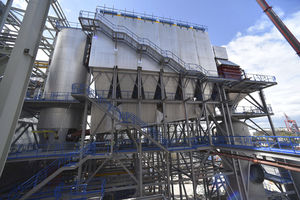
- Environment - Health - Safety
- Air Treatment and Noise Management
- Wet gas scrubber
- Hitachi Zosen Inova AG
Wet gas scrubber corrosive gas

Add to favorites
Compare this product
Characteristics
- Type
- wet
- Type of gas
- corrosive gas
Description
Wet scrubbing is the most effective method for removing acid gases from even heavily burdened flue gases. It achieves the lowest emissions, and is also excellent when it comes to removing particulates and aerosols.
Wet scrubbers consist of several stages, each of which fulfils a particular purpose: separating out specific pollutants, saturating flue gases, or extracting heat. Each scrubber stage therefore features specific equipment, for example nozzles, liquid distributors, packed beds, ringjets, droplet separators, etc. Thanks to different forms of intensive contact of the flue gases with water, pollutants are captured and separated extremely thoroughly.
The individual scrubber stages have their own water circuits. An overarching water distribution system ensures that all stages are supplied with sufficient water and that the separated pollutants are separated via the scrubber blowdown. The scrubber blowdown products are treated in a waste water treatment unit before final discharge.
The multiple-stage counterflow scrubber for the main separation of pollutants
The two-stage parallel flow scrubber for separation of residual pollutants (polishing scrubber)
The single or multiple stage condensing scrubber for extracting flue gas heat
Catalogs
No catalogs are available for this product.
See all of Hitachi Zosen Inova AG ‘s catalogs*Prices are pre-tax. They exclude delivery charges and customs duties and do not include additional charges for installation or activation options. Prices are indicative only and may vary by country, with changes to the cost of raw materials and exchange rates.





